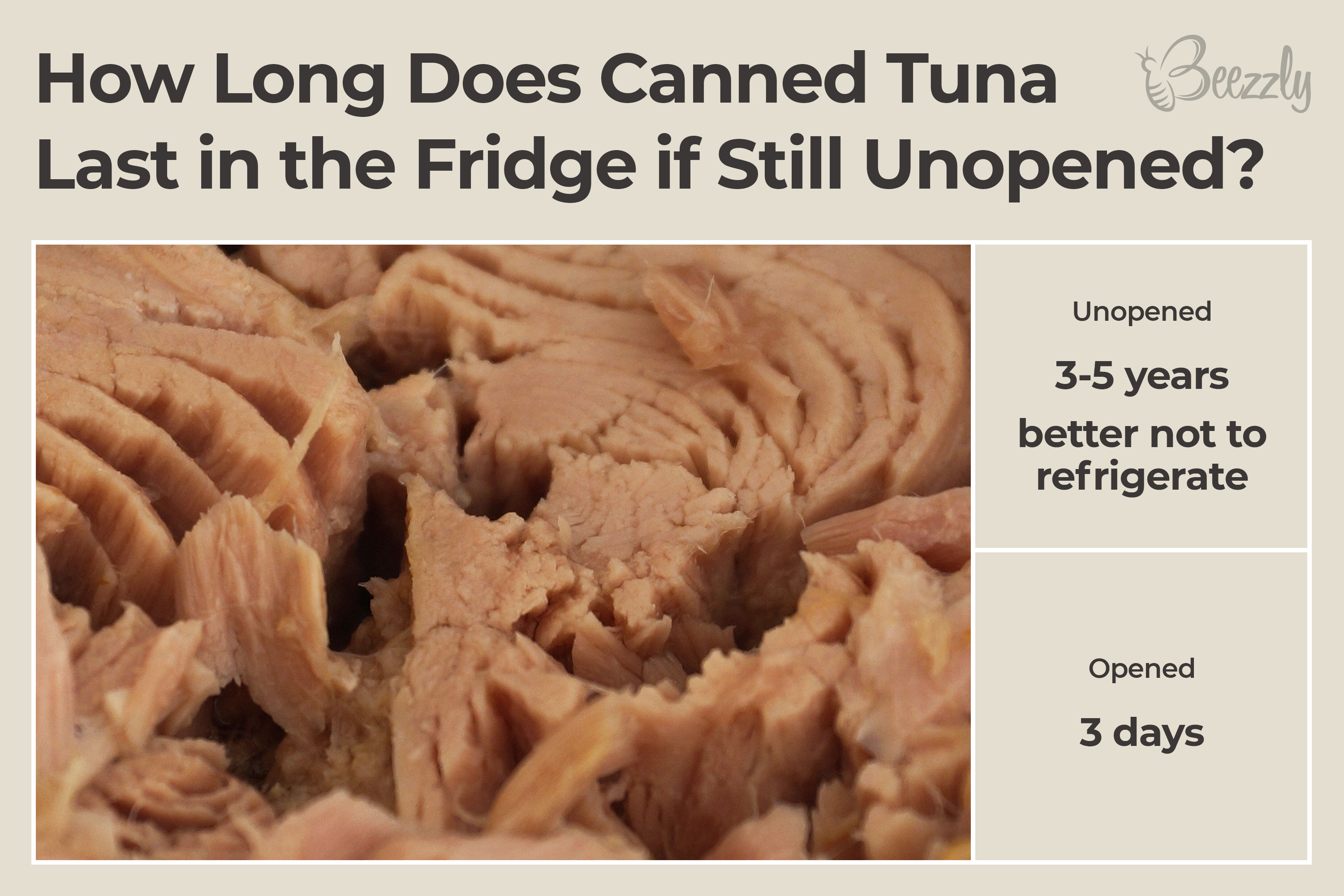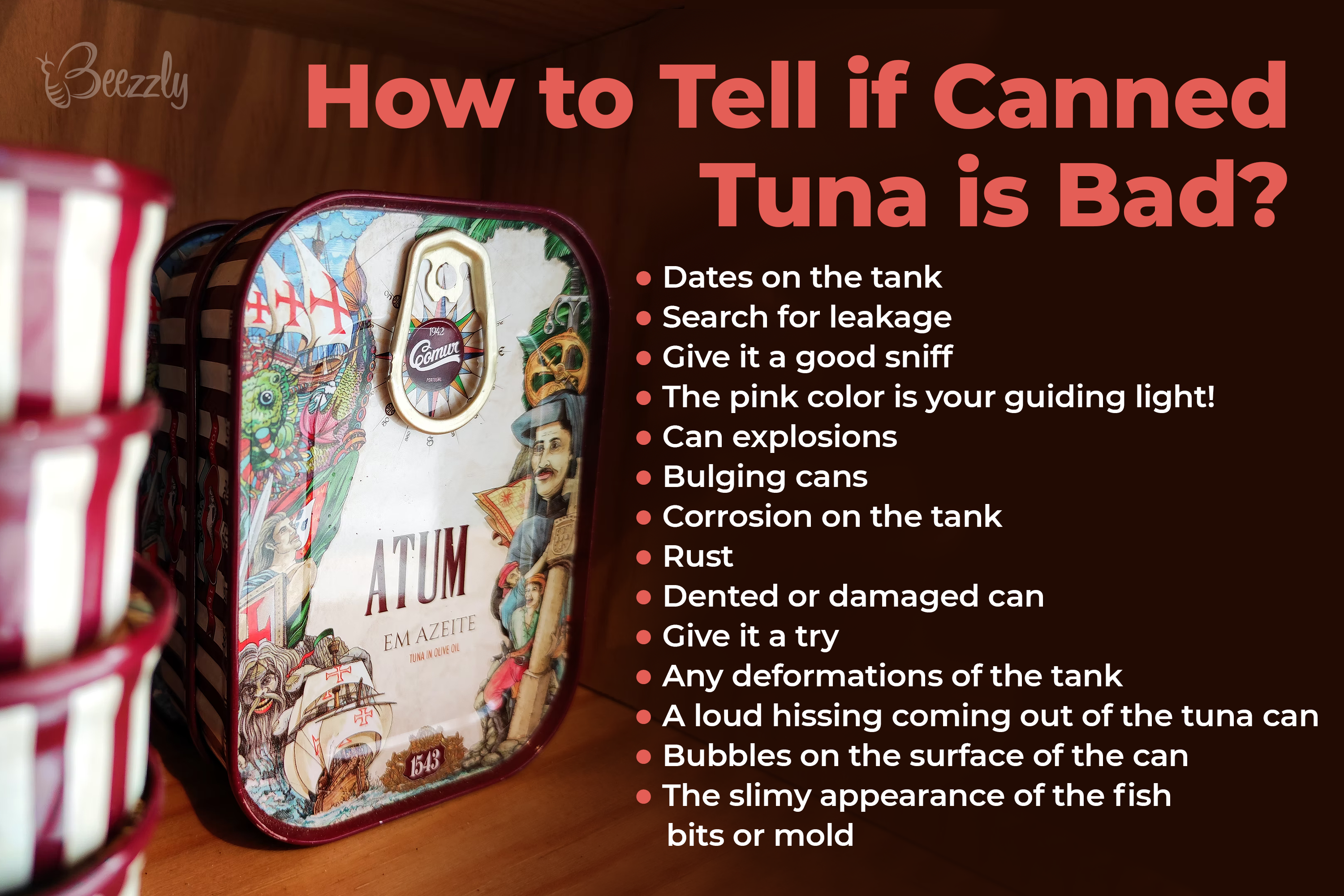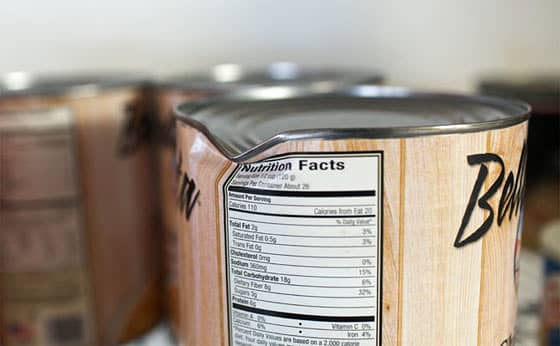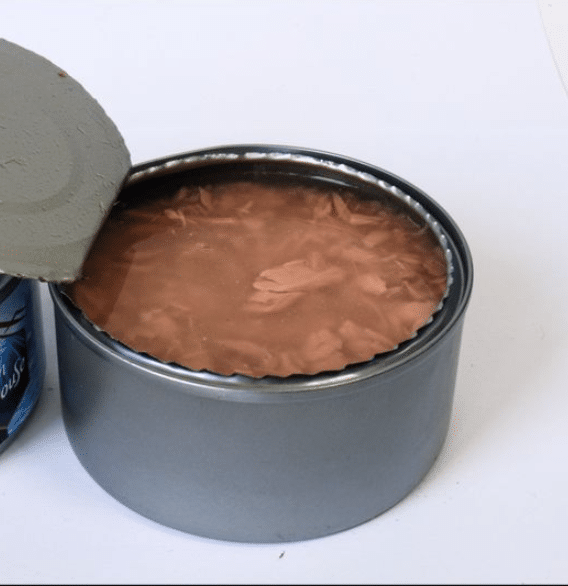When mankind created canned food, tons of problems vanished that used to be unbearable before. From the time when first canned groceries appeared, we stopped worrying about how to keep the foodstuff safe and edible, and it became way easier to grab some goods with us on a trip.
Foodstuffs preserved and packed like this are especially handy when it comes to seafood since it is one of the fastest and easily spoiled products we consume. Canned tuna is not an exception.
If you use this fish canned often enough, then it will be useful for you to learn more about its storage and tuna shelf life, as well as about how to define rotten tuna in time to avoid unpleasant aftermath.
So, How To Tell If Canned Tuna Is Bad? If You see brown, green, or black spots on tuna. That means that canned tuna is spoiled. It can smell rotten or even acidic if you smell an unpleasant odor throw it out. Any deformations of the tank also show that the tuna is spoiled.
Canned Tuna Shelf Life Nuances
When we buy a can of tuna (or any other fish or seafood in general), most of us think it can last nearly forever. Most people simply toss it into the pantry, others prefer to leave it chilled.
However, in both cases, the major and essential aspect is missing and this aspect is called the canned tuna expiration dates.
Yes, this foodstuff is rather long-lasting.
How long is canned tuna good for?
A tank that was initially correctly sealed and later properly stocked according to the requirements can easily stay eatable for up to three years when being kept in a pantry unopened.
In certain situations, for instance, if the storage space is dry enough, the duration of stocking can increase by a few years more!
Of course, such a long shelf life of canned tuna is supported by the proper conditions that must be provided for the foodstuff to remain consumable and of the highest quality to its longest.
- stock the foodstuff unopened in a cool and dry place
- double-check that the tank with the fish is located away from refrigerators, stove, and other appliances that are the sources of heat which is destructive for this foodstuff
- always keep the cans with the fish dry and off the floor to exclude the slightest chance of rusting
- once the tank with tuna is unsealed, the content must be transferred to the airtight container and refrigerated but no more than four days. The same goes for leftover fish
- a salad with canned tuna will remain consumable for up to three days if refrigerated at once
Naturally, we can’t always consume all the tuna we have at home, especially if we tend to buy a lot of it, for the big family, for instance, or if we needed it for making foods for a party, etc.

How long is tuna fish good for after the expiration date?
Well, if the tank is still sealed and undamaged (e.g. without rust, leaks, etc), its content can safely be consumed far beyond the best-by date.
Nevertheless, it doesn’t mean that it will last eternally: the more time it spends stocked the higher the risk of the content getting worse in terms of quality.
Remember: no food can last forever!
That is why it is recommended to finish the canned tuna (even if the tank looks fine and the expiry date is far away) within two or a maximum of three years after it was purchased.
What about the opened foodstuff, somebody may ask? How long does canned tuna last after opening?
As you might already guess, once we unseal the tank, the durability of the content disappears. Unsealed canned fish will remain harmless to eat for only three days if we stock it refrigerated and properly sealed in the airproof tank.
How long does canned tuna last in the fridge if still unopened?
Good question since quite many people prefers keeping it like this to prevent any possible spoilage. In fact, keeping it chilled is not necessary since canned foodstuff can be perfectly fine in your pantry. When we place it to the fridge, we put it under the risk of overcooling at some point which might not be that good for the product.
| Pantry | Fridge | |
|---|---|---|
| Unopened | 3-5 years | better not to refrigerate |
| Opened | - | 3 days |

Does Canned Tuna Go Bad?
The most worrying question everyone asks about this sort of foodstuff is: does canned tuna expire?
Perhaps, people still believe (or hope) that foods packed this way can last forever, but we have to disappoint you, friends: canned tuna does go bad.
Among the most widespread external factors that bring canned tuna expiration closer we can list the following:
- heat
- direct light
- moisture (it makes the can get rusty causing the content to spoil)
- too extended keeping

Is it ok to eat expired canned tuna?
Definitely not!
Like any other food, canned fish including tuna can be rather harmful to our wellbeing when consumed spoiled. If you eat this fish after the tuna expiry date, expect to have some unpleasant effects like upset stomach, nausea, and vomiting (sorry!).
So, if you are not willing to end up with severe food poisoning, we would advise everyone avoid the off fish and foodstuff in general. Take care of your health!
Another issue somewhat related to the one mentioned above sounds like “can you eat canned tuna after the expiration date?”.
As for this aspect, everything is a bit different. Since fish kept in cans is rather durable, it may indeed be safely consumed past its best-by date. Only double-check that the tank is sealed and not damaged from outside!
How to Spot Bad Canned Tuna. Signals To Keep An Eye On

Defying the spoiled foodstuff can be literally life-saving or at least it will protect you from days in bed with stomach pain and food poisoning.
How to tell if canned tuna is bad?
We have prepared a whole list of the most and least obvious symptoms of this foodstuff spoilage so that everyone could define for sure which tank is bad and which is not.
1. Expired tuna can be spotted by the dates on the tank.
If you notice that the canned tuna expiration date passed long ago, toss it away into the trash bin and forget about it.
2. To define spoiled tuna, search for leakage.
The leaking can is not a good sign: it means that the preservation went wrong and the content is no more protected by the tank.
So even if the expiry date is ok but the can leak, discard it.
3. Give it a good sniff.
If you see no obvious external signs of spoilage but for some reason, you are still worried about the quality of the product, unseal it and smell the content.
Does it not smell fishy? Is the odor unpleasant? Smells rotten, or even acidic? Do not hesitate, throw away instantly, and remember to wash hands to ensure no spoiled fish juice got on you.
4. Brown (or green, or black) tuna
Indicates that the fish is rotten or badly spoiled already.
Such a fish will have noticeable brown (or black, or green) streaks spread through the flesh.
5. The pink color is your guiding light!
Tuna is the sort of fish that has its flesh from light pink to bright red. Yes, sometimes that red fresh flesh may have a very light brownish tint, but the meat must anyway be more of pink/red, not brown.
6. Can explosions
This is one more obvious and hard-to-miss sign telling us that things have gone bad and the foodstuff will never be brought back to life.
So if you see that the content literally explodes right after it is unsealed, discard it immediately!
7. Bulging cans.
Yes, if the sealed tank is bulging, then something is definitely not right with the content and we would not even try to open it and see, what exactly didn’t work out. Take that can, toss it to the trash, and go buy another one.

8. Have you noticed that your canned tuna have corrosion on the tank?
Bad news, it is 99% guarantee that the content is impossible to eat. Corrosion ruins can let air and moisture get through it and contact the fish which leads to its spoilage. Don’t take the risk and discard it.
9. Rust is another bad sign to spot on a can with tuna fish.
Just like corrosion, rust tends to create tiny holes on the surface of the item it appeared on which – guess what? – leads to the spoilage of the content because air and moisture can now easily get inside the can.
What to do? That’s right, toss it away.
10. Dented or damaged can

This shows us that the content of it is not safe anymore. What does it mean if the can, especially its lid, dents? In this situation, pressurization of the can was released. This allows harmful bacteria to appear and spread over the foodstuff inside. So if you don’t want to consume some salmonellas (we are sure you don’t!), get rid of that can.
11. Give it a try.
Yes, that is a risky method but it can work out if none of the obvious symptoms of spoilage exist. Just open the can and take a small (!) bite of the fish. Even if the odor you sense is ok but foodstuff tastes bad or somehow weird, discard it.
12. Any deformations of the tank may also show that its content is not well.
Of course, it may not always be so, but let’s agree: it is better to go for another one rather than take a risk of buying the one that doesn’t look much trustworthy!
13. If you hear a loud hissing coming out of the tuna can, this doesn’t promise any good.
And even if it reminds a scene from a horror movie, such a sound means that there is a toxic gas inside produced by the harmful bacteria. And yes, you know what to do.
14. Bubbles on the surface of the can
Don’t belong to the positive signs. If one or two small bubbles are ok since they appear because of agitation caused by opening, the layer of foamy bubbles speaks to us: the content is spoiled!
15. The slimy appearance of the fish bits or mold found on them can also be the symptom.
If any of these symptoms are found, the can must be discarded for your own sake.
Now that you know how to tell if canned tuna is bad and have a complete list of all possible signs of it, we are sure that you will be safe and sound no matter what.
Eat safe and take care!
[wp-faq-schema title=”Frequently Asked Questions”]








